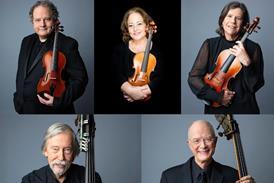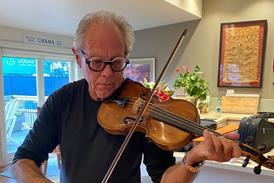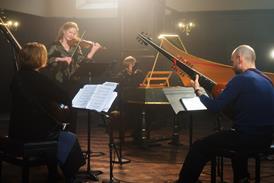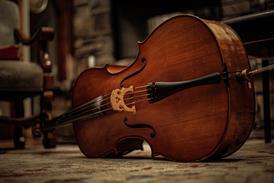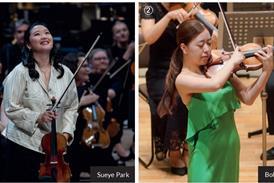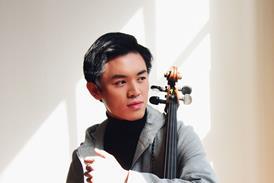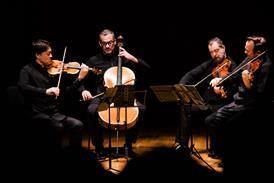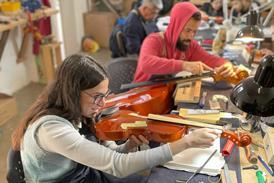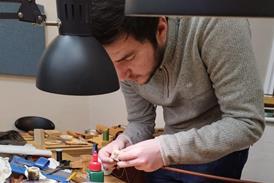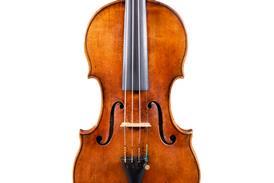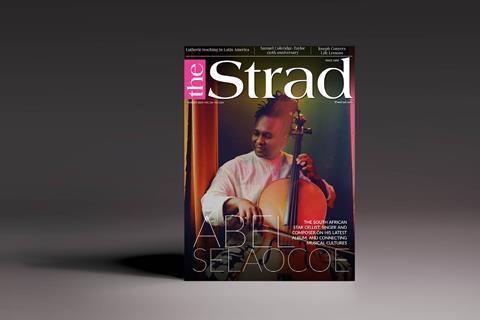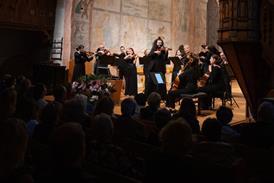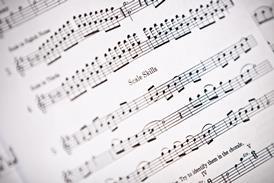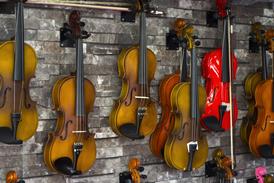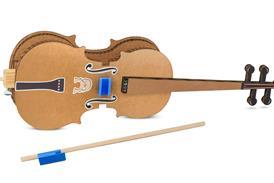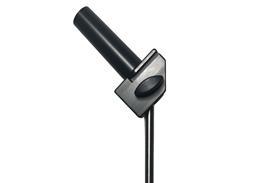Technical – Page 6
-
 Premium ❘ Feature
Premium ❘ Feature‘An appearance of delicacy’ - Guarneri ‘del Gesù’ 1736 violin: Beauty from the Beast
Although Guarneri ‘del Gesù’ is best known for his wild, unruly later masterpieces, the 1736 ‘Cessole’, ‘Teja–Ferni’ violin reveals his softer side, as Carlo Chiesa explains
-
 Premium ❘ Feature
Premium ❘ Feature‘Makers have been working blind’ - Cremonese archings
Gareth Ballard presents a detailed method for analysing the various curves of archings
-
 Premium ❘ Focus
Premium ❘ FocusAnalysing the 'Titian' Stradivari violin, 1715
In our February 2009 issue, Sam Zygmuntowicz examines one of Stradivari's finest golden period instruments, using both traditional and high-tech methods
-
 Premium ❘ Feature
Premium ❘ FeatureCopying the ‘Titian’: A study in scarlet
Jesús Alejandro Torres reports on a study by the Violin Making School of Mexico, in which three copies of Stradivari’s ‘Titian’ violin were made using wood of varying densities
-
 Premium ❘ Feature
Premium ❘ FeatureMaking copies: Sounds like a match?
If someone makes an exact copy of a Stradivari, will it sound like a Stradivari? Sam Zygmuntowicz attempts to answer the question by making duplicates of the ‘Titian’ and ‘Willemotte’ Strads, as well as the ‘Plowden’ Guarneri ‘del Gesù’
-
 Premium ❘ Feature
Premium ❘ Feature‘Timbre and brilliance are not static, but dynamic’ - Making Matters: Sound ideas
Violinists and brothers Arne and Jens Rossbach share their experiments in sound and timbre
-
 Premium ❘ Feature
Premium ❘ FeatureTrade Secrets: Fitting a bridge to a violin belly
A detailed account of a process that revisits a fundamental skill for luthiers
-
 Premium ❘ Feature
Premium ❘ FeatureIn Focus: A 1756 baroque cello by Robert Duncan
David Rattray on the Scottish maker’s mid-18th-century baroque cello
-
 Video
VideoFuture of pernambuco under discussion at CITES convention
The two-week conference on endangered species is currently under way in Panama City
-
 News
NewsViolin and bow makers honoured at 2022 VSA Violin Making Competition
Almost 30 gold medals went to the violin, viola, cello and double bass makers at the awards dinner on 17 November
-
 Premium ❘ Feature
Premium ❘ Feature‘The great artistry of history’s most important bow maker’ - François Xavier Tourte
Paul Childs compares and contrasts two very late violin bows by François Xavier Tourte
-
 Premium ❘ Feature
Premium ❘ FeatureAntonio Stradivari ‘Harrison’ violin 1693: The start of something big
Andrew Dipper shows how the 1693 ‘Harrison’ violin signifies the start of a critical phase in the master luthier’s career
-
 Premium ❘ Feature
Premium ❘ FeatureIn Focus: A c.1750 violin by Santo Serafin
Jonathan Marolle investigates the mid-18th-century Italian instrument
-
 News
NewsTartini tones: new research shows differences in old and new instruments
An Italian team has recorded the mysterious ‘third tone’, created when playing a two-note chord, as part of its research
-
 Premium ❘ Feature
Premium ❘ Feature21st-century technology in lutherie - Making Matters: Augmented reality
Paul Noulet and Benoit Dupeux on how 21st-century technology can add to the luthier’s arsenal of violin making tools
-
 Premium ❘ Feature
Premium ❘ FeatureTrade Secrets: Making a scroll cast using foam
An efficient method of casting a scroll that eliminates the need for silicone rubber
-
 Premium ❘ Feature
Premium ❘ FeatureTrade Secrets: Using Baker-style mechanics on a double bass
How to fit these brass pegs, gears and tuners, as used by English bass makers in times gone by
-
 Premium ❘ Feature
Premium ❘ FeatureTrade Secrets: A ‘plug and plate’ repair for a double bass neck
A detailed alternative method for a difficult neck and pegbox repair
-
 Premium ❘ Feature
Premium ❘ FeatureIn Focus: A c.1900 violin by Raffo Cipriani
Ernst Fuchs looks at the Italian maker’s late-period instrument
-
 Premium ❘ Feature
Premium ❘ FeatureTrade Secrets: Making a cello and bass mould
A lightweight design for an adaptable method of working


